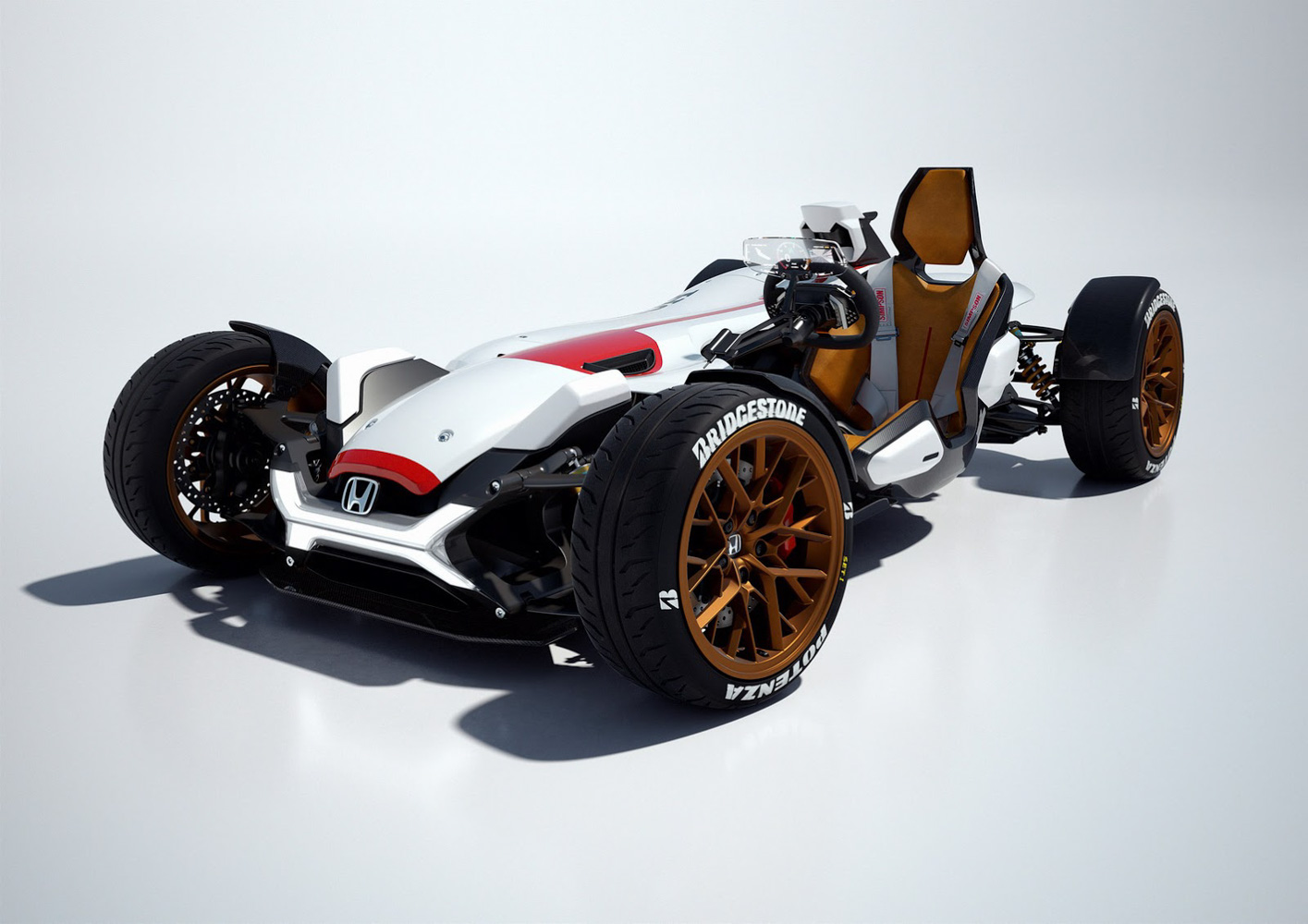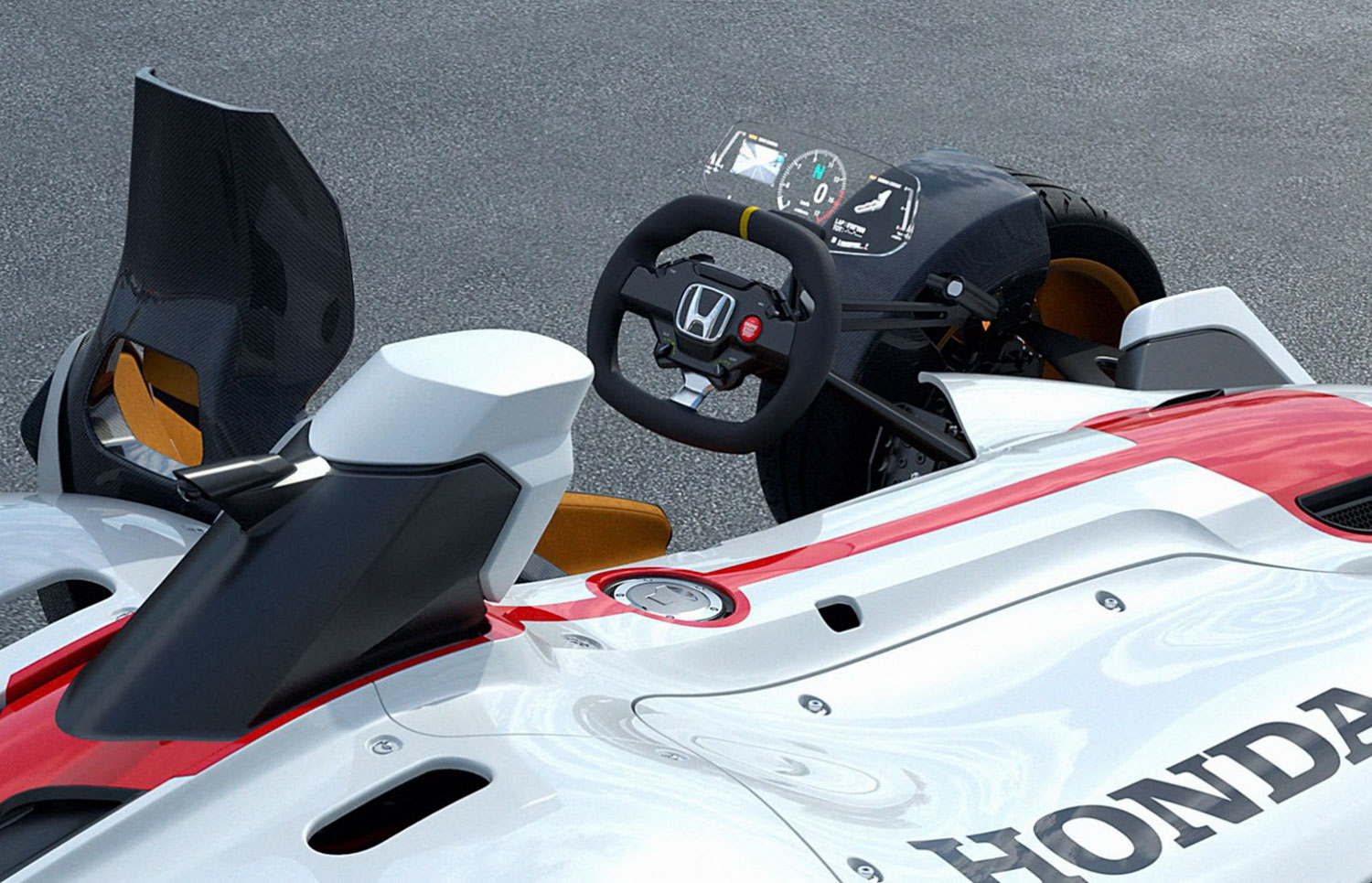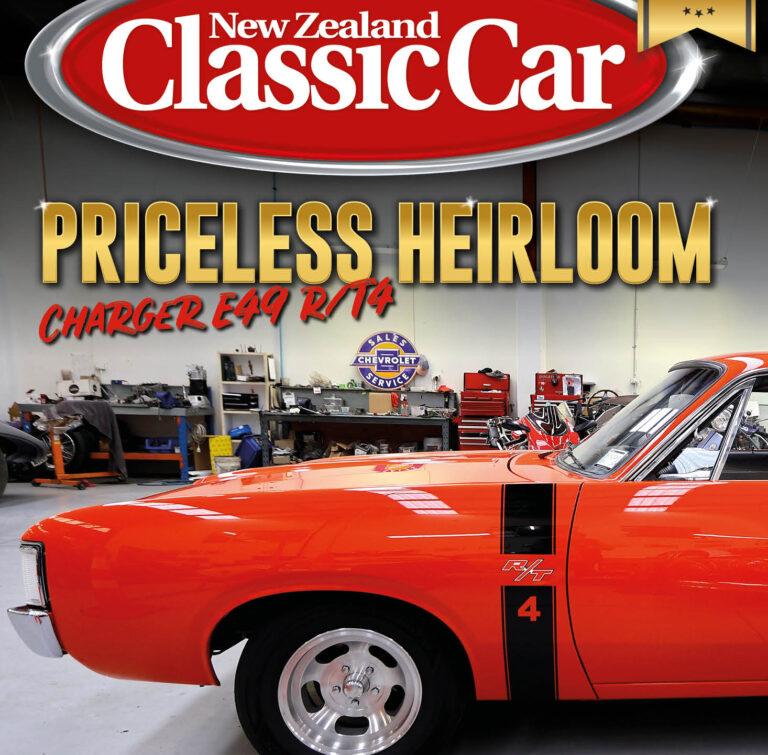If you haven’t heard yet, Honda is cool again. Inform your friends, your family, and your dog; it’s happening and it’s real — and their latest out-of-the-box conceptual creation does nothing but solidify the fact.

This rather incredible looking thing is called the Honda 2&4, christened as such due to its marriage of Honda’s technology and ethos from their combined bike and car divisions. While that might sound a little bit like awkward marketing mumbo jumbo, it’s actually quite accurate when you consider the tech underneath the 2&4’s lightweight exoskeleton.
It’s powered by Honda’s 999cc V4 power plant taken from their RC213V MotoGP motorcycle, which revs to an incomprehensible 14,000rpm. Factor in that the 2&4 tips the scales at a featherweight 405kg, and is a mere 3.04 metres long, and it’s clear to see that the Tic Tac on wheels should be capable of some incredible track antics.

Almost as intriguing as its technology is the 2&4’s looks and layout. Apart from looking a little bit like a BAC Mono that spent a few too many minutes in the dryer, the 2&4 most notably denies its driver a traditional cockpit — instead forcing them to suck in nature’s bug-ridden fresh air by bolting the seat bespokely to the side of the car.

The elephant in the room is the fact that such a vehicle, as it stands in all its Honda-rendered glory, would be highly unlikely to ever pass any safety regulations — especially any side-on impact tests, considering how exposed the driver is. But it’s still very cool to see a car manufacturer dream the occasional dream, and hopefully a few of the curious ideas and features from the 2&4 can make their way into a few production cars — though I doubt that the exposed driver’s seat will ever be one of them.








